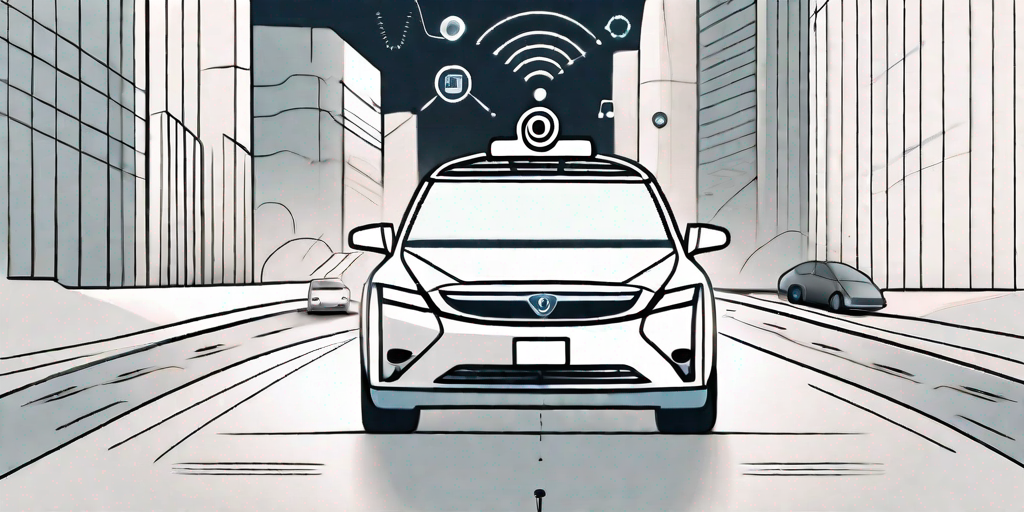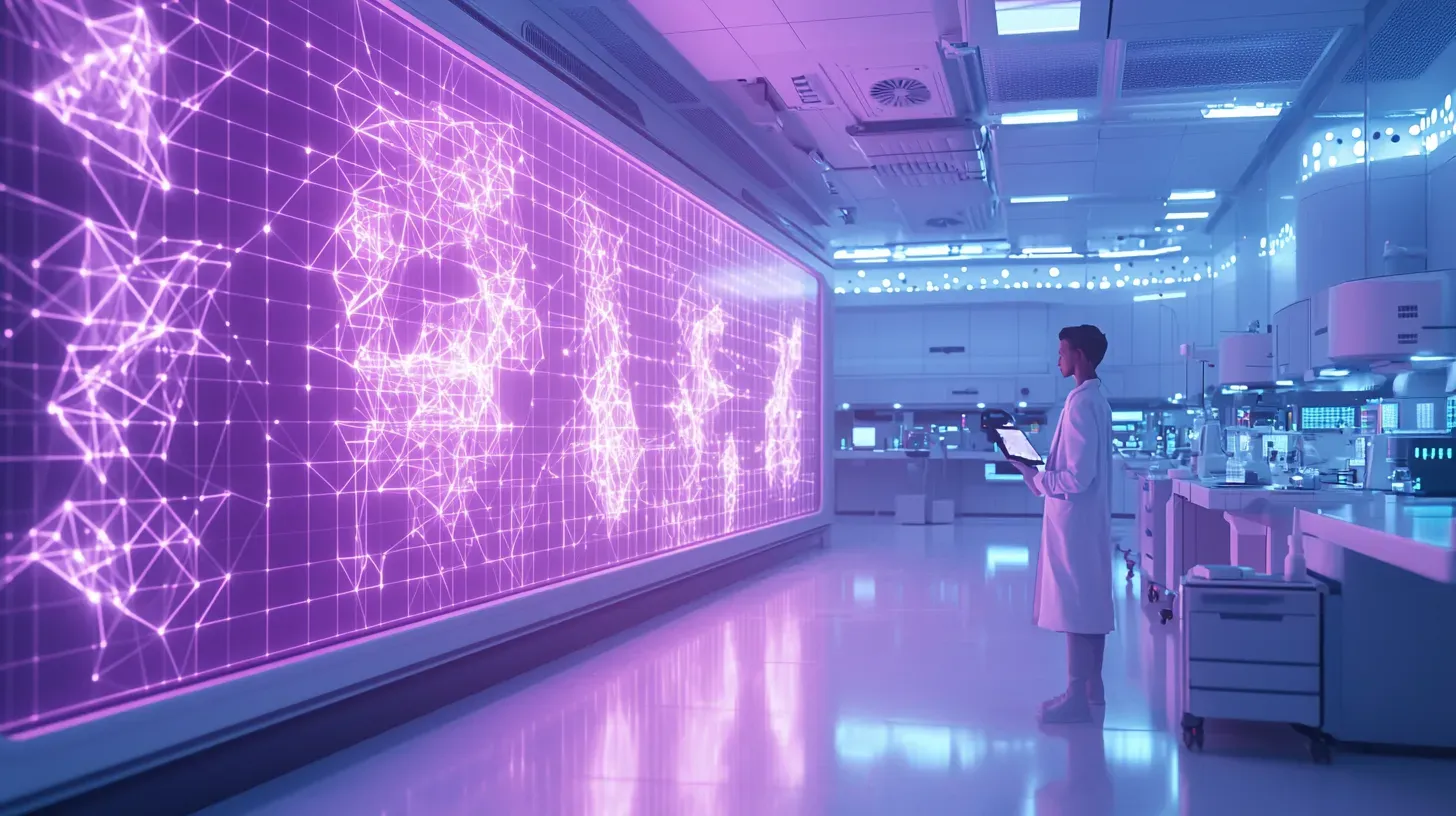Strategy Keynote Speaker: Understanding Self-Driving Vehicles

Strategy Keynote Speaker: Understanding Self-Driving Vehicles
Self-driving vehicles have been making headlines for some time now, captivating audiences with their potential to revolutionize the way we travel. As technology continues to advance at a rapid pace, it becomes increasingly important to understand the intricacies and future impact of self-driving vehicles. This is where a strategy keynote speaker comes in - someone who can enlighten us about the role these vehicles will play in our lives and the implications they will have on society as a whole.
Understanding the Future of Transport with Self-Driving Vehicles
Imagine a world where cars navigate through traffic seamlessly, without the need for human intervention. This is the promise of self-driving vehicles. They hold the potential to transform transportation as we know it, making it safer, more efficient, and more accessible for everyone. A strategy keynote speaker can help us make sense of this transformative technology and shed light on the future of transport.
These vehicles utilize a combination of sensors, cameras, and advanced algorithms to perceive their surroundings and make decisions in real-time. They can identify obstacles, interpret traffic signs, and even communicate with other vehicles on the road. It's a marvel of modern engineering that has the potential to reshape our cities and enhance our lives in ways we never thought possible.
One of the key advantages of self-driving vehicles is their potential to greatly reduce accidents on the road. According to the World Health Organization, over 1.35 million people die each year due to road traffic accidents. With self-driving technology, the number of accidents could be significantly reduced as these vehicles are not prone to human errors such as distracted driving, fatigue, or impaired judgment. This means safer roads for everyone, with fewer injuries and fatalities.
Moreover, self-driving vehicles have the potential to revolutionize transportation for people with disabilities or limited mobility. Currently, many individuals with disabilities rely on specialized transportation services or assistance from others to get around. With self-driving vehicles, they would have the freedom to travel independently, opening up new opportunities for employment, education, and social activities. This technology has the power to break down barriers and create a more inclusive society.
In addition to safety and accessibility, self-driving vehicles also have the potential to greatly improve traffic flow and reduce congestion. Traffic congestion is a major issue in many cities around the world, leading to wasted time, increased fuel consumption, and negative environmental impacts. Self-driving vehicles can communicate with each other and with traffic infrastructure to optimize traffic flow, reducing the number of vehicles on the road and minimizing delays. This would not only save time and fuel for individual drivers but also contribute to a more sustainable and efficient transportation system.
Furthermore, the rise of self-driving vehicles could have a profound impact on urban planning and infrastructure. With fewer cars on the road, cities could repurpose parking spaces and roadways for other uses, such as green spaces, bike lanes, or public transportation infrastructure. This would not only improve the quality of life for residents but also contribute to a more sustainable and livable urban environment.
While the future of self-driving vehicles holds great promise, there are also challenges that need to be addressed. One of the main concerns is the ethical implications of autonomous decision-making. In situations where accidents are unavoidable, self-driving vehicles would need to make split-second decisions on how to minimize harm. This raises complex ethical questions that require careful consideration and regulation.
In conclusion, self-driving vehicles have the potential to revolutionize transportation and reshape our cities. They offer numerous benefits, including improved safety, accessibility, and traffic flow. However, there are also ethical challenges that need to be addressed. By understanding the future of transport with self-driving vehicles, we can navigate this transformative technology in a way that benefits society as a whole.
Role of a Strategy Keynote Speaker in Unveiling Autonomous Vehicles
While the technology behind self-driving vehicles may be complex, the role of a strategy keynote speaker is to simplify and demystify it. Their expertise and deep understanding of the subject enable them to communicate the key concepts and ideas in a clear and engaging manner. Whether it's explaining the underlying technology or discussing the societal implications, a strategy keynote speaker is adept at unraveling the mysteries surrounding autonomous vehicles.
One of the main responsibilities of a strategy keynote speaker is to help us understand the potential benefits of self-driving vehicles. They can delve into the details of how these vehicles can contribute to reduced traffic congestion, as they are designed to optimize traffic flow and minimize bottlenecks. By utilizing advanced sensors and algorithms, autonomous vehicles can navigate through traffic more efficiently, leading to smoother and faster journeys for everyone on the road.
Improved road safety is another crucial aspect that a strategy keynote speaker can shed light on. Self-driving vehicles have the potential to significantly reduce the number of accidents caused by human error. With their advanced sensors and real-time data analysis capabilities, autonomous vehicles can detect and respond to potential hazards more quickly and accurately than human drivers. This can lead to a substantial decrease in the number of injuries and fatalities on our roads.
In addition to the benefits mentioned above, a strategy keynote speaker can also address the concerns and misconceptions that often arise when discussing autonomous vehicles. For example, they can provide insights into the potential impact on employment. While it is true that self-driving vehicles may lead to some job displacement in certain sectors, they can also create new job opportunities in areas such as vehicle maintenance, software development, and data analysis. By presenting a balanced perspective, a strategy keynote speaker can help alleviate fears and foster a more informed and constructive dialogue.
Privacy is another important aspect that a strategy keynote speaker can address. With the increasing amount of data collected by autonomous vehicles, concerns about privacy and data security have emerged. A skilled speaker can explain the measures taken by manufacturers and regulators to ensure the protection of personal information and maintain the privacy of individuals. They can also discuss the importance of establishing clear guidelines and regulations to govern the collection, storage, and use of data generated by autonomous vehicles.
By providing a comprehensive and insightful analysis of the topic, a strategy keynote speaker plays a crucial role in shaping our understanding of this groundbreaking technology. Their ability to simplify complex concepts, address concerns, and highlight the potential benefits helps to bridge the gap between technological advancements and public perception. Through their presentations, they contribute to a more informed and engaged society, ready to embrace the future of autonomous vehicles.
Decoding the Technology Behind Self-Driving Vehicles
The technology behind self-driving vehicles is a fascinating blend of hardware and software. LiDAR sensors, which use laser beams to measure distances, play a crucial role in providing a detailed 3D map of the vehicle's surroundings. Combined with cameras, radar systems, and powerful onboard computers, these vehicles have the ability to perceive and respond to their environment with astonishing accuracy.
LiDAR, or Light Detection and Ranging, is a technology that has revolutionized the way self-driving vehicles navigate the world around them. These sensors emit laser beams that bounce off objects in their path and return to the sensor, allowing it to calculate the distance and shape of those objects. This information is then used to create a detailed 3D map of the vehicle's surroundings, enabling it to make informed decisions about its path and avoid potential obstacles.
Cameras also play a crucial role in the perception capabilities of self-driving vehicles. These cameras capture visual information about the vehicle's surroundings, including the position of other vehicles, pedestrians, and traffic signs. Advanced computer vision algorithms analyze this visual data, allowing the vehicle to identify and track objects in real-time. This enables the vehicle to make intelligent decisions based on its understanding of the environment, such as when to stop at a red light or yield to a pedestrian.
In addition to LiDAR and cameras, self-driving vehicles are equipped with radar systems. Radar uses radio waves to detect objects and measure their distance, speed, and direction of movement. This technology is particularly useful in situations where visibility is limited, such as in heavy rain or fog. By combining the data from LiDAR, cameras, and radar, self-driving vehicles can build a comprehensive and accurate picture of their surroundings, ensuring a high level of safety and reliability.
However, the development of self-driving vehicles is not without its challenges. Navigating complex urban environments, with their intricate road networks, unpredictable human behavior, and ever-changing traffic conditions, requires sophisticated algorithms and robust decision-making capabilities. Self-driving vehicles must be able to interpret and respond to a wide range of scenarios, from merging lanes to pedestrian crossings, with the same level of caution and precision as a human driver.
Ensuring the safety of both passengers and pedestrians is a top priority in the development of self-driving vehicles. Extensive testing and validation processes are conducted to ensure that these vehicles can handle a variety of real-world situations and respond appropriately. Safety features such as emergency braking systems and redundant hardware and software systems are implemented to minimize the risk of accidents and ensure the highest level of passenger protection.
By understanding the intricacies of the technology behind self-driving vehicles, we can appreciate the immense efforts being made to bring autonomous vehicles to our roads. The combination of LiDAR, cameras, radar systems, and powerful onboard computers has the potential to revolutionize transportation, making it safer, more efficient, and more accessible for everyone. As the technology continues to advance, self-driving vehicles will become an integral part of our daily lives, transforming the way we travel and shaping the future of transportation.
How a Strategy Keynote Speaker Explains the Impact of Autonomous Vehicles on Society
The impact of self-driving vehicles extends far beyond just transportation. A strategy keynote speaker can provide insights into the broader societal implications of this technology. They can discuss how autonomous vehicles will reshape our cities, transform industries, and redefine our relationship with mobility.
For example, with the advent of self-driving vehicles, we may see a decline in car ownership as transportation becomes more on-demand and shared. This shift can have significant implications for urban planning, land use, and infrastructure development. A strategy keynote speaker can help us understand the potential challenges and opportunities that arise from this transformation, ensuring that we are prepared for the future.
Preparing for a Future with Autonomous Vehicles
As self-driving vehicles move closer to becoming a reality, it's important that we prepare ourselves for the changes that lie ahead. A strategy keynote speaker can guide us in navigating this transition, helping us adapt to the new possibilities and challenges that autonomous vehicles bring.
They can discuss the importance of policy and regulatory frameworks to ensure the safe and responsible deployment of self-driving vehicles. They can also explore the potential impact on various industries, such as transportation, logistics, and insurance. By understanding the broader implications, we can actively participate in shaping the future of autonomous vehicles.
Conclusion
In conclusion, understanding self-driving vehicles and their future impact is crucial in today's rapidly evolving world. A strategy keynote speaker can play a pivotal role in enlightening us about the technology, its potential benefits, and the challenges it presents. By delving into the intricacies of self-driving vehicles, we can better prepare ourselves for a future where autonomous vehicles are an integral part of our daily lives.
FAQ
1. What are the potential benefits of self-driving vehicles?
Self-driving vehicles have the potential to greatly reduce accidents on the road, revolutionize transportation for people with disabilities or limited mobility, and improve traffic flow and reduce congestion.
2. What is the role of a strategy keynote speaker in unveiling autonomous vehicles?
A strategy keynote speaker simplifies and demystifies the technology behind self-driving vehicles, helps us understand the potential benefits, addresses concerns and misconceptions, and contributes to a more informed and engaged society ready to embrace the future of autonomous vehicles.
3. What is the technology behind self-driving vehicles?
The technology behind self-driving vehicles includes LiDAR sensors, cameras, radar systems, and powerful onboard computers. These components work together to perceive and respond to the vehicle's surroundings, enabling safe and reliable autonomous navigation.
Contact a Strategy Keynote Speaker for your event
Are you ready to take your next event to a whole new level? Dr Mark van Rijmenam, a renowned Strategy Keynote Speaker, is available to enlighten your audience about the fascinating world of self-driving vehicles. With his deep understanding of the subject and ability to simplify complex concepts, Dr van Rijmenam will captivate your audience, providing them with valuable insights into the future of transportation. His engaging presentation will not just inform, but inspire, sparking meaningful conversations and new ideas among your attendees. Don't miss this opportunity to bring an expert voice on this transformative technology to your event. Simply complete the form below and we will be in touch within 24 hours. Embark on this exciting journey into the future of autonomous vehicles with Dr Mark van Rijmenam.
Thanks for your inquiry
We have sent you a copy of your request and we will be in touch within 24 hours on business days.
If you do not receive an email from us by then, please check your spam mailbox and whitelist email addresses from @thedigitalspeaker.com.
In the meantime, feel free to learn more about The Digital Speaker here.
Or read The Digital Speaker's latest articles here.





